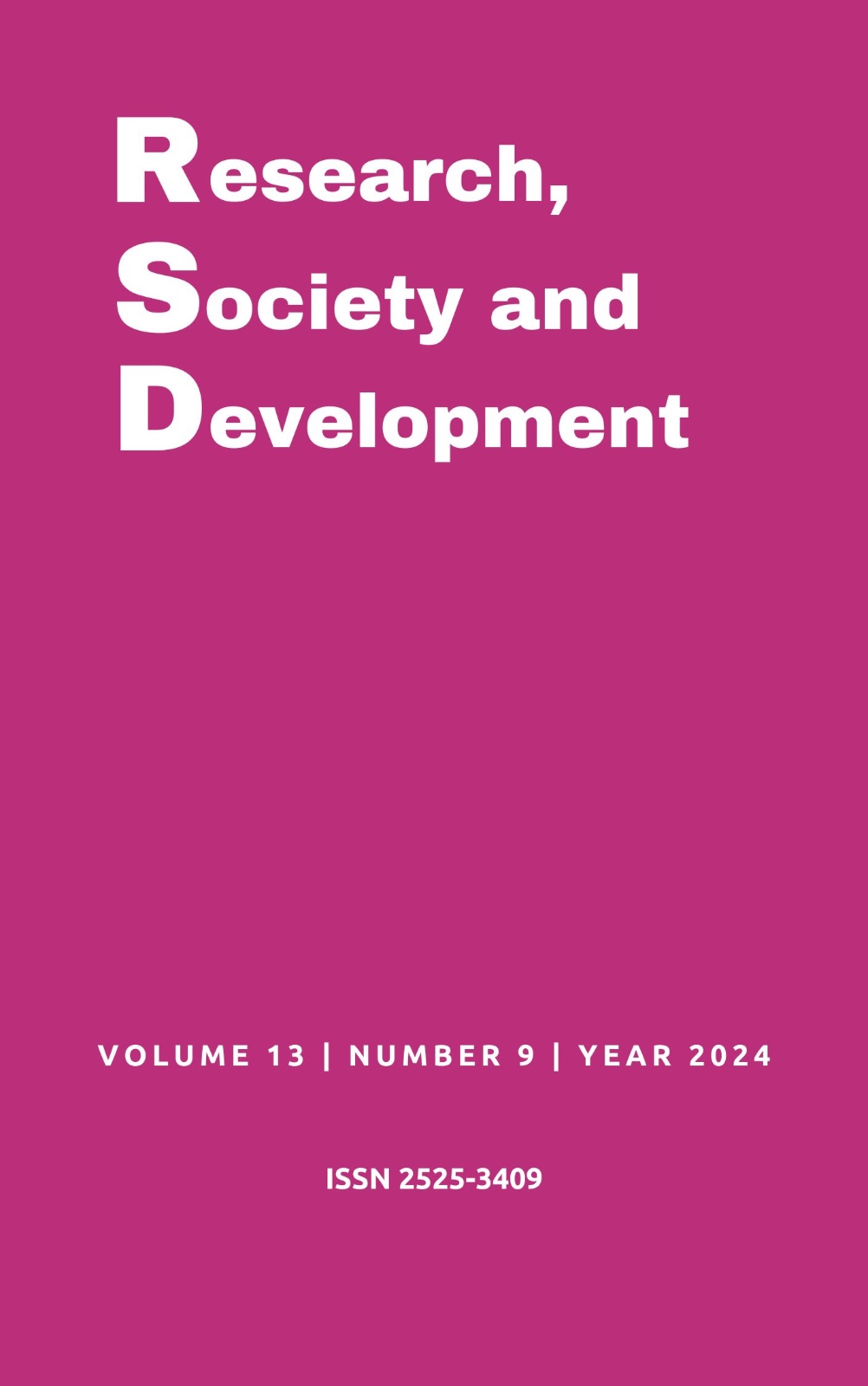Pesky Stock Keeping Unit (SKU) demand forecasting model for American Auto Parts Retailer
DOI:
https://doi.org/10.33448/rsd-v13i9.46809Keywords:
Machine learning, Predictive modeling, Demand forecasting, Outlier handling, Pesky skus, Inventory management.Abstract
The current issue faced by the client involved lost sales and increased holding costs for leftover inventory. Both issues have a direct impact on the economic profits of the firm and are thus of pressing importance to the company. This research aims to build an accurate demand forecast for a group of SKUs that have unusually low performance in certain stores as compared to the majority. We have used historical sales data in our project in order to better understand the patterns in sales which can then give us an idea of future sales. Through this study, we have identified anomalous SKUs based on outlier detection and understanding the statistical significance of each input predictor. We have defined thresholds in sales per store amount to classify each SKU as “pesky”, i.e., underperforming in some stores and overperforming in others, or not. Further, we have attempted to forecast the demand for these pesky SKUs in order to improve the inventory management and sales reporting of the firm. We explored and applied prediction models including linear, random forest and lasso regression. This will not only reduce holding costs and avoid lost sales, but also streamline the supply chain as it gives the client a better understanding of the parts that need to be supplied to each store.
References
Chen, I.-F., & Lu, C.-J. (2016). Sales forecasting by combining clustering and machine-learning techniques for computer retailing. The Natural Computing Applications Forum.
Croston, J. D. (1972). Forecasting and stock control for intermittent demands. Journal of the Operational Research Society, 23(3). https://doi.org/10.1057/jors.1972.50
Dhinakaran, A. (2022) Shelf engine’s CEO on disruptive innovation without disruptive adoption and the AI-driven future of grocery retail. Forbes. https://www.forbes.com/sites/aparnadhinakaran/2022/01/27/shelf-engines-ceo-on-disruptive-innovation-without-disruptive-adoption-and-the-ai-driven-future-of-grocery-retail
Grand View Research (2019) U.S. automotive aftermarket size, share & trends analysis report by replacement part, by distribution channel (retailers, wholesalers), by service channel, by certification, and segments forecasts, 2019 – 2025. https://www.grandviewresearch.com/industry-analysis/us-automotive-aftermarket
Guo, Z.X., Wong, W.K., & Li, M. (2013) A multivariate intelligent decision-making model for retail sales forecasting,Decision Support Systems,Volume 55, Issue 1,2013,Pages 247-255, ISSN 0167-9236, https://doi.org/10.1016/j.dss.2013.01.026.
Gutierrez, R. S., Solis, A. O., & Mukhopadhyay, S. (2008) Lumpy demand forecasting using neural networks. International Journal of Production Economics, 111(2). https://doi.org/10.1016/j.ijpe.2007.01.007
Hastie, T. J., & Tibshirani, R. J. (1986) Generalized Additive models. Statistical Science, 1(3), 297–318. https://pdodds.w3.uvm.edu/files/papers/others/1986/hastie1986a.pdf
Hirche, M., Farris, P. W., Greenacre, L., Quan, Y., & Wei, S. (2021) Predicting under and overperforming skus within the distribution–market share relationship. Journal of Retailing, 97(4). https://doi.org/10.1016/j.jretai.2021.04.002
Hohberg, M., Peter, P., & Kneib, T. (2018). Generalized additive models for location, scale and shape for program evaluation: A guide to practice. Working Paper. https://arxiv.org/pdf/1806.09386
Insider Studios & Salesforce. (2021) How to drive predictable revenue with more accurate sales forecasting. Business Insider. https://www.businessinsider.com/sc/how-to-improve-sales-forecasting-2021-11
Kandananond, K. (2012) A comparison of various forecasting methods for autocorrelated time series. International Journal of Engineering Business Management, 4, 4.
Kurawarwala, A. A., & Matsuo, H. (1996) Forecasting and inventory management of short life-cycle products. Operations Research, 44(1). https://doi.org/10.1287/opre.44.1.131
Li, C., & Lim, A. (2018) A greedy aggregation–decomposition method for intermittent demand forecasting in fashion retailing. European Journal of Operational Research, 269(3). https://doi.org/10.1016/j.ejor.2018.02.029
Lolli, F. et al., (2019) Machine learning for multi-criteria inventory classification applied to intermittent demand, Prod. Plan. Control 30 (1) 76–89, http://dx.doi.org/10.1080/09537287.2018.1525506.
Mukhopadhyay, S., Solis, A. O., & Gutierrez, R. S. (2012) The accuracy of non‐traditional versus traditional methods of forecasting lumpy demand. Journal of Forecasting, 31(8). https://doi.org/10.1002/for.1242
Qiwei, H. et al. (2018) OR in spare parts management: A review, European J. Oper. Res. 266 (2) 395–414, http://dx.doi.org/10.1016/j.ejor.2017.07.058.
Roda, I. (2014), et al., A review of multi-criteria classification of spare parts: From literature analysis to industrial evidences, J. Manuf. Technol. Manag. 25 (4) 528–549, http://dx.doi.org/10.1108/JMTM-04-2013-0038.
Snyder, R. (2002). Forecasting sales of slow and fast moving inventories. European Journal of Operational Research, 140(3). https://doi.org/10.1016/S0377-2217(01)00231-4
Tsoumakas, G. (2018). A survey of machine learning techniques for food sales prediction. Artificial Intelligence Review, 52(1), 441-447.
Vieira, S. et al., (2015). A demand classification scheme for spare part inventory model subject to stochastic demand and lead time, Prod. Plan. Control 26 (16) 1318–1331, http://dx.doi.org/10.1080/09537287.2015.1033497
Williams, T. M. (1984). Stock control with sporadic and slow-moving demand. Journal of the Operational Research Society, 35 (10). https://doi.org/10.1057/jors.1984.185
Zhang, X., & Zeng, J. (2017), Joint optimization of condition-based opportunistic maintenance and spare parts provisioning policy in multiunit systems, European J. Oper. Res. 262 (2) 479–498, http://dx.doi.org/10.1016/j. ejor.2017.03.019.
Downloads
Published
Issue
Section
License
Copyright (c) 2024 Lucero Isabel Izquierdo Munoz; Jose Manuel San Martin Galindo

This work is licensed under a Creative Commons Attribution 4.0 International License.
Authors who publish with this journal agree to the following terms:
1) Authors retain copyright and grant the journal right of first publication with the work simultaneously licensed under a Creative Commons Attribution License that allows others to share the work with an acknowledgement of the work's authorship and initial publication in this journal.
2) Authors are able to enter into separate, additional contractual arrangements for the non-exclusive distribution of the journal's published version of the work (e.g., post it to an institutional repository or publish it in a book), with an acknowledgement of its initial publication in this journal.
3) Authors are permitted and encouraged to post their work online (e.g., in institutional repositories or on their website) prior to and during the submission process, as it can lead to productive exchanges, as well as earlier and greater citation of published work.


